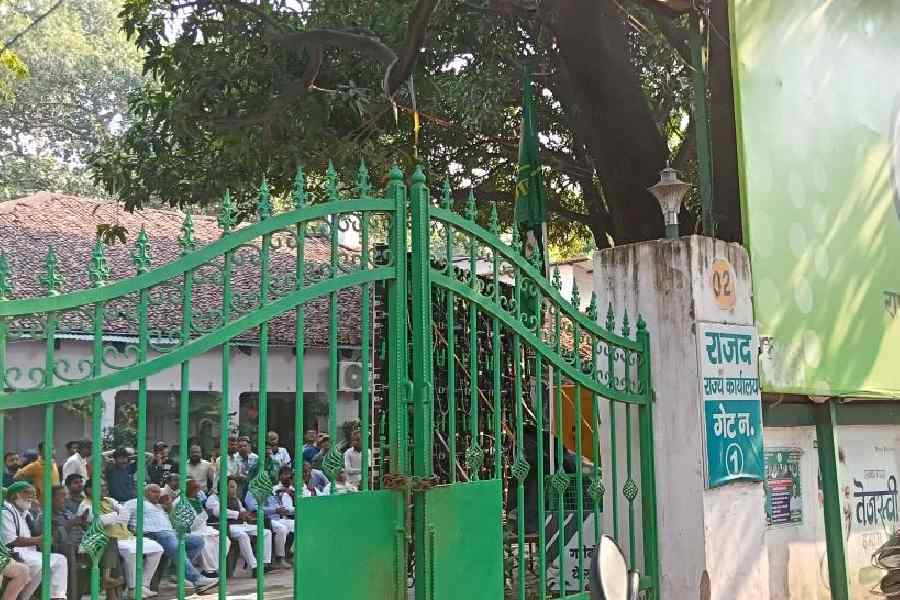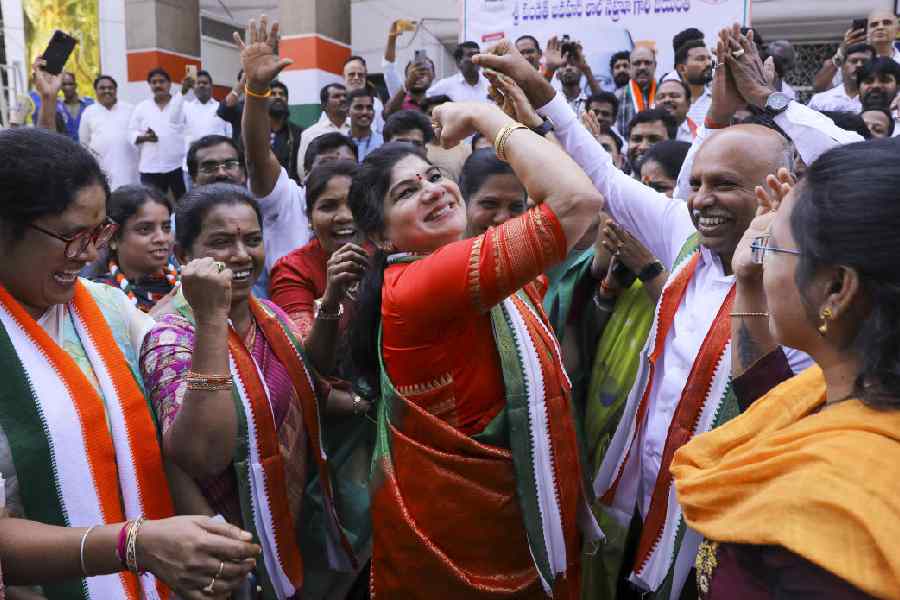In a country where life is so cheap and precarious, the passing away of an 86-year-old man should ordinarily provoke little comment. But the death of G D Agrawal, also known as Swami Gyan Swaroop Sanand, in Rishikesh on October 11 this year was no ordinary death. It came at the end of a fast that had lasted one hundred and eleven days. He had been fasting, as he had done many times before, in the cause of his beloved Ganga.
He had survived on lemon water and honey from the time he started his fast on June 22. In face of the government’s complete indifference, Agrawal announced that he would stop drinking water too from October 9, on the eve of the Navratras.
He was then forcibly taken away from his ashram, Matri Sadan, on the banks of the Ganga to the AIIMS in Rishikesh. Frail but indomitable, he told reporters that he would not allow himself to be force-fed; he expected to die before Dussehra. His prophecy came chillingly true. He died, officially of a heart attack, the next day.
Over the years, the Gandhian weapon of “fast unto death” has lost all meaning, emptied of the inner force that made it a potent tool of resistance and struggle. The idea of fasting for a cause has survived —but in the distorted form of a “token” hunger strike or the even more farcical “relay” hunger strike.
That a man should actually die of fasting in this day and age is disturbing enough. But that is not the only reason we must take note of the extraordinary life and death of a true satyagrahi — days after the advent of the official celebration of Mahatma Gandhi’s 150th birth anniversary.
The death of Agrawal also exposes the extraordinary hypocrisy and callousness of the Narendra Modi government, and the prime minister himself, towards a river that lies at the heart of their religio-national iconography and towards a man who dedicated his life to it.
G D Agrawal was no politician. And though he took sanyas in 2011, he was no charlatan in saffron robes either.
Agrawal was that rare person: a man of science who was also a spiritual seeker; establishing through scientific experiments the purity of the waters of the Ganga and also seeing himself as the son of the river, Ma Gangaji was how he always addressed it.
He graduated as a civil engineer from Roorkee, received a doctorate in environmental engineering from the University of California, Berkeley, taught for several years at IIT Kanpur and mentored an entire generation of activists who took forward the ideas of conservation, environmental protection and sustainable development. He was the first member-secretary of the Central Pollution Control Board. He also spent several years of his post-retirement life as an honorary professor at the Mahatma Gandhi Grameen Vishwavidyalaya at Chitrakoot where he lived a spartan Gandhian life.
But for the last several years, Agrawal became a passionate crusader for a clean and free-flowing Ganga. The latter attribute — free flowing — was central to the purity of the Ganga, he was convinced, for his experiments had shown that the water’s almost magical ability to destroy bacteria weakened when the flow was impeded in the lower reaches of the river.
That is why he was implacably opposed to the building of a series of dams and hydropower projects in the upper reaches of the Ganga and fasted five times — in 2008, 2009, 2010, 2012 and 2013 — to demand a stop to these projects and other assaults on the Ganga and its major tributaries.
The United Progressive Alliance government under Manmohan Singh responded to Agrawal’s protests with sensitivity. It agreed to scrap several of the projects along the Bhagirathi river and declared the 135-kilometre stretch from Gaumukh (the source of the Ganga) to Uttarkashi as an eco-sensitive zone. Jairam Ramesh, the Union environment minister in 2009-2011, met him several times during that period. In a moving tribute after the crusader’s death, Ramesh said he was “deeply anguished by the martyrdom of Prof G D Agrawal” and said it had been his privilege to have been able to “implement some of his important suggestions to ensure uninterrupted flow in the holy Ganga and its tributaries in Uttarakhand.”
When the Bharatiya Janata Party-led coalition under Narendra Modi came to power in 2014, Agrawal was hopeful of more gains. In one of his many letters to Modi, he explained just why. He wrote: “I had a great confidence that after your becoming the Prime Minister you would think seriously about Gangaji because you have yourselves stated in the run up to the 2014 elections in Banaras that you have come there because of the call given to you by Ma Gangaji — that very moment I came to believe that you would probably do something worthwhile for Gangaji and it is on account of that belief that I kept waiting in peace for the past four and a half years.”
But his hopes, stoked further by the Modi government’s decision to create a separate ministry for works relating to the Ganga, were bitterly belied. Agrawal pointed out in the letter that “in the past four years all actions undertaken by your government have not at all been gainful to Gangaji and in her place gains are to be seen only for the Corporate Sector and several business houses.”
He went on to demand that the government bring a draft bill prepared by the Ganga Mahasabha in 2012 for passage in Parliament, cancel under-construction projects over the Alaknanda, Dhauliganga, Nandakini, Mandakini and Pindar rivers and the proposed hydel power projects on the Ganga and its feeder streams, put a stop to mining, and constitute a Ganga Bhakta Parishad who would take an oath to save and protect the river.
The Modi government, in sharp contrast to the previous regime, made no moves to reach out to Agrawal after he wrote to the prime minister on February 24 this year, announcing his intention to begin a fast-unto-death from June 22. And once he started the fast, the government’s callousness only increased. The Union minister, Uma Bharati, did visit the fasting sanyasi but she had little power to offer anything.
Some of Agrawal’s demands may have been difficult to meet. And many environmental activists may not share his zeal for protecting the Ganga on spiritual-religious grounds. But any regular visitor to the state of Uttarakhand — be they agnostic or religious, secular or spiritual — would empathize with the broad contours of Agrawal’s crusade. For over the past few years, under the BJP governments in the state and the Centre, the wanton destruction of the fragile Himalayan ecosystem has gathered furious pace.
Modi’s pet project — the 900-kilometre Char Dham Highway Development Project — which aims to provide all-weather road connectivity to the four shrines of Gangotri, Yamunotri, Kedarnath and Badrinath, for instance, does not just involve the felling of thousands of trees but also the willful erosion of hillsides and filling the Ganga and other rivers with huge amounts of debris.
The project is just the most egregious symbol of the Modi government’s “development” model that seeks to promote river-bed mining and mindless construction, and convert pristine pilgrimage sites into overcrowded tourist destinations. And for all the BJP’s talk of cultural nationalism, no other regime has been as unmindful of the innate sacredness of the Himalaya and the Ganga or their secular centrality to the lives of millions of Indians who live below in the plains.
The Modi government’s indifference to Agrawal’s fast is symptomatic of its callous disregard for the Himalaya and the rivers that flow out of the mountains. Congress governments have also followed the “development” agenda. But they were more sensitive to environmental concerns, more open to alternative views, ready to negotiate and to compromise — evident from the contrasting approaches to Agrawal’s fasts. Narendra Modi, the self-proclaimed son of Ganga, had no qualms to let a real Gangaputra die.
But the government could get away with it because few of us knew of Agrawal’s struggle. Even his death caused no ripples, coming as it did in the midst of a social media “revolution” that created overnight “radicals” on the strength of their tweets. The life and death of G D Agrawal also show that shorn of a hashtag, real struggles and real sacrifices have little power to stir our conscience anymore, #alas...
manini.chatterjee@abp.in










